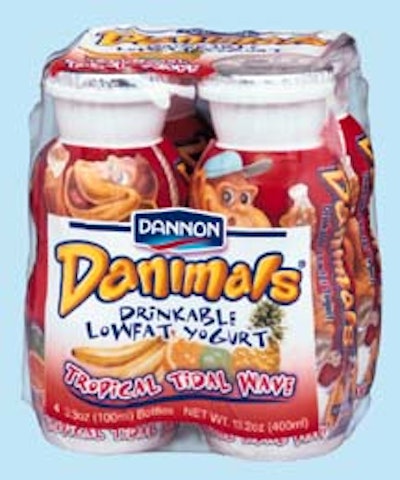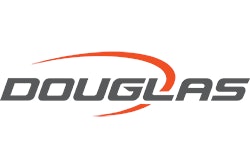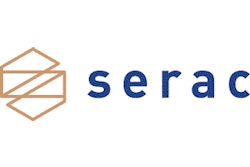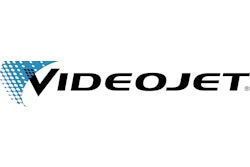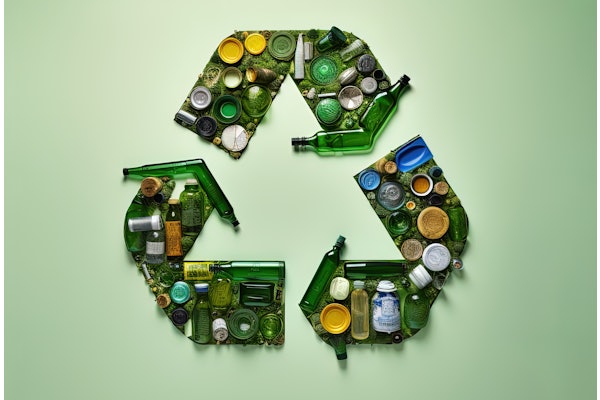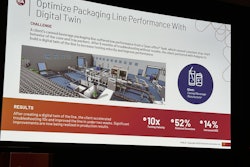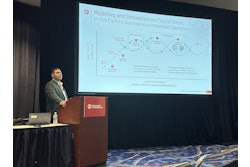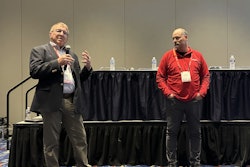New products are the lifeblood of a food company. But some companies are creating profitable new products not by inventing them entirely from scratch, but rather by building on the equity already established by existing products. Kellogg Co. of Battle Creek, MI, and Dannon USA of Tarrytown, NY, provide two good examples of how this strategy can be implemented. In each case, kid-oriented packaging plays a key role.
Kellogg’s new product is Snack’Ums™, a line of wholesome snacks featuring nutritious bite-sized pieces packaged in spiral-wound canisters supplied by Sonoco (Hartsville, SC). The three flavors are Big Boomin’ Pops (corn with a taste of caramel), Big Rollin’ Fruit Loops (rings with natural fruit flavors), and Rice Krispies Treats Krunch (crispy rice and marshmallow bites).
Scheduled for national rollout next month, a single-serve 1-oz size is aimed at C-stores, a 4.2-oz canister goes to supermarkets, and a 16-oz jumbo size is aimed at club stores. Suggested retail prices are 79¢, $1.99 and $3.79, respectively. A fourth package format, 12 of the 1-oz canisters in a shrink-wrapped tray, is also intended for club store sale at $5.99.
“We’ve leveraged three of our popular cereal equities in creating Snack’Ums: Fruit Loops, Corn Pops and Rice Krispies Treats cereals,” says Kenna Bridges, senior manager of marketing communications at Kellogg. The target market, says Bridges, is children aged 8 to 12 who like to snack after school.
Why a canister?
“That’s what consumers wanted,” says Bridges. “We did a lot of research on the type of package consumers wanted this snack in. The canister rated the highest. Consumers wanted the package to be portable and convenient and capable of keeping product fresh after it was first opened. But they also wanted something durable enough to allow it to be stuffed into a backpack without causing damage to the crunchy product inside.”
Bridges admits the canister costs about twice what a typical cereal carton would cost. But the decision to invest in the canister anyway was not a particularly difficult one. “We wanted to give consumers the package they wanted,” says Bridges.
The Sonoco canisters are spiral wound of 100% recycled paperboard, aluminum foil and a paper label that’s gravure printed in seven colors plus varnish by American Packaging (Rochester, NY). Seamed-on bottoms are steel. Filling is done by co-packers that Bridges doesn’t name.
The peelable tabbed membrane sealed to the rim of the package is a metallized polyester with heat-seal coating. The membrane is flexo-printed with the word “Snack’Ums” in one color. The final package piece, a translucent plastic low-density polyethylene overcap, is used for resealing the canister after it’s been opened.
Relaunch plus line extension
While Kellogg’s Snack’Ums are just now reaching store shelves, Danimals® drinkable yogurt from Dannon USA has been available for about a year. According to Chris Tsilibes, a Dannon brand manager, a spoonable yogurt in a cup sporting the Danimals brand was introduced in 1994 and then relaunched in January ’99. Part of the relaunch involved new package graphics. In place of realistic images of animals on the cup, the new graphics feature cartoon-character animals. At the same time this switch was made, Dannon introduced a product line extension by adding a drinkable yogurt in four flavors to the Dannon Danimals team.
“We took our newly created Danimals cartoon characters and leveraged them onto this drinkable product,” says Tsilibes.
The colorful cartoon graphics and a bottle shaped perfectly for small hands are two key drivers behind the early success of the drinkable yogurt. In test in Michigan and Florida since early last year, the 3.1-fl-oz yogurt is aimed at children ages 3 to 8. Suggested retail price for a shrink-wrapped four-pack is $2.99. According to Tsilibes, plans to go national are now being finalized.
“One thing that’s universal is what kids like,” says Tsilibes. “We have a product packaged like this in Europe, so we just took that and adapted it for the U.S. market. We call it the bubble bottle. It fits a child’s hand perfectly, it’s easy to open, and it allows for a smooth free flow of our drinkable yogurt.”
As Dannon expands distribution of its novel food product, its trade promotional materials emphasize the kid appeal inherent in the package: “A smooth delicious drinkable low-fat yogurt that comes in a specially patented kid-sized bottle, not a cup,” says one Dannon brochure. The same piece also establishes a solid connection with the original Danimals product: “Same great taste and wholesomeness as the Danimals cup yogurt!”
Custom molding
The small white high-density PE Danimals bottles are extrusion-blown in custom molds by Graham Packaging (York, PA) in its Rancho Cucamonga, CA, plant. Graham also applies the shrink-sleeve label, which is gravure printed in nine colors by Sleever Intl. of France, represented in North America by Canadian Sleever (Toronto, Ontario, Canada).
Filling is done in Dannon’s Fort Worth, TX, plant, where the 11-g empty bottles move from a Posimat (Miami, FL) unscrambler to an air-conveying system supplied by NTS (Fayetteville, GA). A Serac (Carol Stream, IL) system takes care of rinsing, filling and capping, which is done at 500 bottles/min.
Lidding is aluminum foil. The Serac system forms the roll-fed foil into a cap complete with pull tab. It heat-seals the foil to the bottle finish and crimps the foil around. Then a Videojet ink-jet coder from Marconi Data Systems (Wood Dale, IL) applies the use-by date to the top of the foil. Shelf life on the refrigerated product is about the same as any other refrigerated yogurt: 30 days.
Secondary packaging is as automated as the upstream operations. First, a shrink wrapper from Douglas Machine (Alexandria, MN) bundles four bottles in an LDPE film supplied by Armin Plastics (Minneapolis, MN). Preprinted on the portion of the film that serves as the bottom is a bar code so that supermarket checkout scanners can scan the four-pack as a single unit. Also printed flexographically in five colors are vibrant portrayals of the Danimals themselves: Chimp, Rhino, Bear, etc.
Four-packs are conveyed next into a wraparound case packer, also supplied by Douglas Machine. The final piece of equipment in the line is a case palletizer from Priority One (Waterloo, Ontario, Canada).
Partly responsible for designing the packaging line, project engineer Kent Burleson says the small, lightweight bottle is an unusual one to handle, especially when it’s empty. “It’s a different animal, that’s for sure,” says Burleson. “But we were able to learn from our counterparts in Europe. They use different unscramblers and fillers, but still we benefited from their experience.”
In a hurry? Request more info via Web-based reader service by clicking on company name.
Or you can jump right to their Web site if it's listed.
